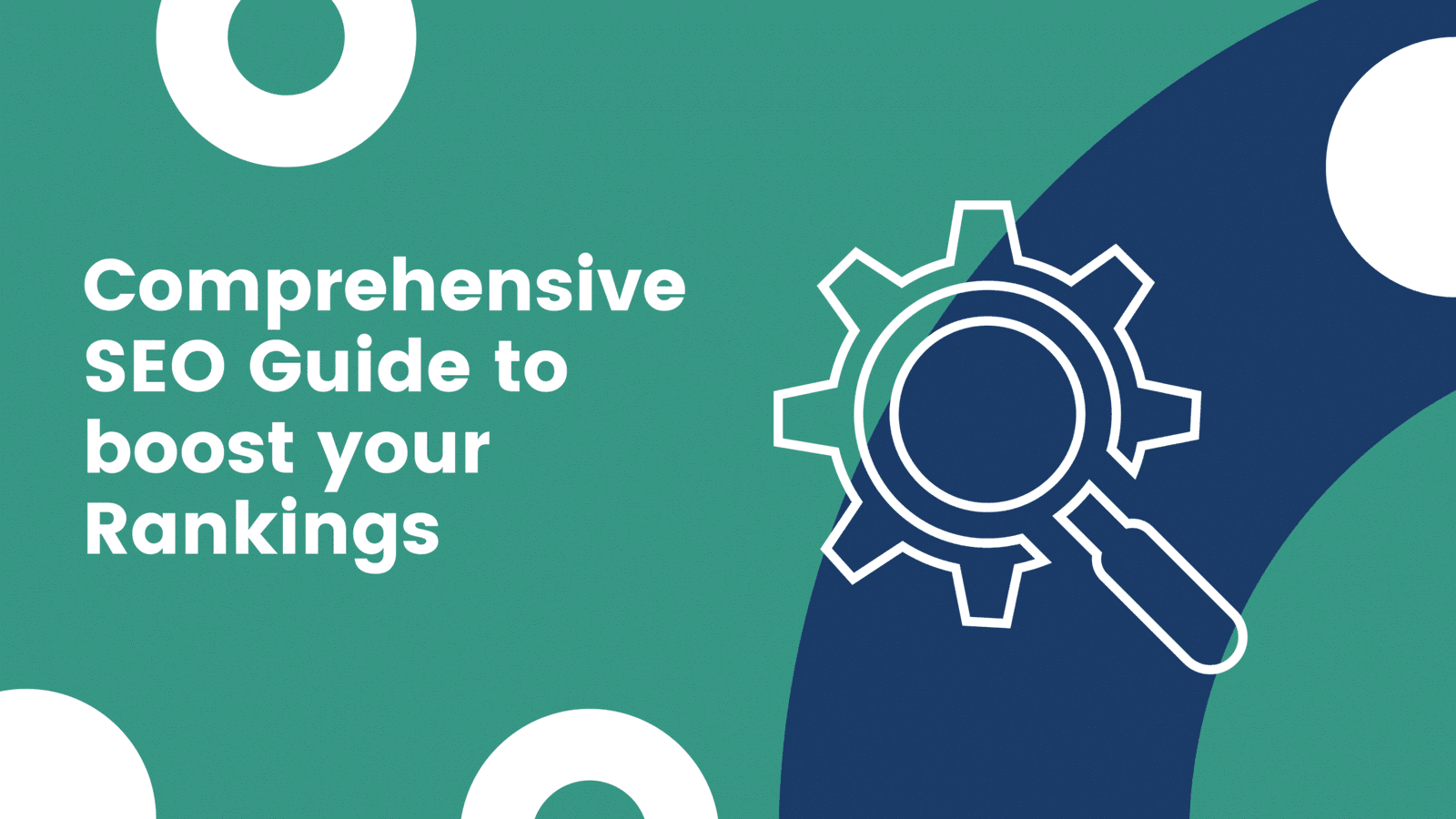Let’s talk about SEO linking, folks. If you’re serious about improving your website’s search engine rankings, this is one of the most crucial elements you need to understand. SEO linking isn’t just about slapping random links on your page and hoping for the best—it’s a strategic game that can make or break your online presence. Whether you’re a newbie or a seasoned pro, mastering SEO linking can take your site from obscurity to the top of Google’s search results.
Now, I know what you’re thinking—“Is SEO linking really that important?” The short answer? Yes, absolutely. Google and other search engines use links as one of the primary signals to determine the authority and relevance of your website. Think of links as votes of confidence from other sites saying, “Hey, this page is legit and valuable.” The more quality votes you get, the better your chances of climbing the rankings.
But here’s the thing—SEO linking is not just about quantity. It’s about quality, strategy, and staying ahead of the curve. In this guide, we’ll break down everything you need to know about SEO linking, from the basics to advanced tactics. So, buckle up and let’s dive in!
Read also:Bryan Johnson Children A Comprehensive Look Into The Life And Legacy
Table of Contents:
- What is SEO Linking?
- Why Does SEO Linking Matter?
- Types of SEO Links
- Best Practices for SEO Linking
- SEO Link Building Strategies
- Avoiding Common SEO Linking Mistakes
- Measuring SEO Linking Success
- Tools for SEO Linking
- The Future of SEO Linking
- Conclusion
What is SEO Linking?
SEO linking is basically the process of connecting web pages through hyperlinks. These links can be internal, pointing to other pages within your own site, or external, leading to pages on other domains. The goal of SEO linking is to enhance the user experience while also improving your site’s visibility in search engine results.
Think of it like building a network of roads. Each link is a pathway that helps users and search engines navigate your site more efficiently. When done right, SEO linking can boost your site’s authority, drive more traffic, and ultimately increase conversions.
Why is Linking Important in SEO?
Links are like the glue that holds the web together. They help search engines understand the structure and content of your site. Plus, they provide valuable context about the topics you cover. For example, if you write an article about “healthy eating” and link to a reputable source like the World Health Organization, Google sees that as a sign of credibility.
So, in a nutshell, SEO linking is all about creating a seamless, interconnected web of information that benefits both users and search engines.
Why Does SEO Linking Matter?
Here’s the deal—SEO linking matters because it directly impacts your site’s search engine rankings. Search engines like Google use a complex algorithm to evaluate websites, and one of the key factors they consider is the quality and quantity of links pointing to your site.
Read also:Why Police Called 12 Is A Buzzword You Need To Know Right Now
When other sites link to yours, it signals to search engines that your content is valuable and trustworthy. This, in turn, can improve your site’s authority and help you rank higher for relevant keywords. And let’s be real—higher rankings mean more traffic, which can lead to more sales, leads, or whatever your ultimate goal is.
How SEO Linking Affects User Experience
Aside from boosting your rankings, SEO linking also enhances the user experience. By providing relevant links, you make it easier for visitors to find the information they need. This can lead to longer session times, lower bounce rates, and happier users overall.
And let’s not forget—happy users are more likely to share your content, which can lead to even more links and exposure. It’s a win-win situation!
Types of SEO Links
Not all links are created equal. In the world of SEO, there are two main types of links you need to know about: internal and external links.
Internal Links
Internal links connect different pages within your own site. They help users and search engines navigate your content more easily. For example, if you’re writing a blog post about “SEO tips,” you might link to another post you’ve written about “keyword research.”
Internal linking is a powerful way to keep users engaged and guide them toward related content. Plus, it helps distribute page authority across your site, making it easier for search engines to index your pages.
External Links
External links, on the other hand, point to pages on other domains. These links can add credibility to your content by referencing authoritative sources. For instance, if you’re writing about “digital marketing trends,” you might link to a study published by HubSpot or Moz.
While external links don’t directly boost your site’s authority, they can improve your content’s perceived value. Just be sure to link to reputable sources—spammy or low-quality links can do more harm than good.
Best Practices for SEO Linking
Now that you know the basics, let’s talk about some best practices for SEO linking. These tips will help you create a solid linking strategy that maximizes your site’s potential.
- Use descriptive anchor text: Anchor text is the clickable text in a hyperlink. Instead of using generic phrases like “click here,” try to use descriptive text that gives users and search engines context about the linked page.
- Link to high-quality content: Whether you’re linking internally or externally, always choose content that adds value to your readers. Avoid linking to spammy or irrelevant sites.
- Balance internal and external links: While both types of links are important, it’s crucial to strike a balance. Too many external links can dilute your site’s authority, while too few can make your content seem isolated.
- Regularly update your links: Broken links can hurt your site’s user experience and SEO. Make it a habit to check your links regularly and update or remove any that are no longer working.
How to Optimize Anchor Text
Anchor text plays a big role in SEO linking. It’s the text that users click on to follow a link, and it provides valuable context to search engines. Here are a few tips for optimizing your anchor text:
- Use relevant keywords, but avoid overstuffing.
- Vary your anchor text to avoid looking spammy.
- Keep it concise and descriptive.
SEO Link Building Strategies
Link building is one of the most effective ways to improve your site’s authority. Here are some proven strategies to help you build high-quality backlinks:
Guest Blogging
Guest blogging involves writing articles for other websites in exchange for a backlink to your site. This is a great way to reach a wider audience and build relationships with other bloggers in your niche.
Broken Link Building
Broken link building involves finding broken links on other sites and suggesting your own content as a replacement. This strategy requires some research, but it can yield great results if done correctly.
Resource Page Link Building
Many websites have resource pages that list useful tools, guides, or articles. If you create high-quality content, you can reach out to site owners and ask them to include your link on their resource page.
Avoiding Common SEO Linking Mistakes
While SEO linking can be incredibly powerful, it’s also easy to make mistakes that can hurt your rankings. Here are some common pitfalls to avoid:
- Overusing anchor text: Stuffing your content with keyword-rich anchor text can look spammy and trigger Google penalties.
- Buying links: Purchasing backlinks is against Google’s guidelines and can result in severe penalties.
- Ignoring link quality: Quantity is not as important as quality. Focus on building links from authoritative, relevant sites.
How to Fix Broken Links
Broken links can harm your site’s user experience and SEO. To fix them, you’ll need to identify which links are broken and update them accordingly. There are several tools available that can help you detect broken links, such as Screaming Frog and Google Search Console.
Measuring SEO Linking Success
Once you’ve implemented your SEO linking strategy, it’s important to track its performance. Here are some key metrics to monitor:
- Referral traffic: This shows how much traffic you’re getting from external links.
- Backlink count: Keep an eye on the number of backlinks pointing to your site.
- Domain authority: This metric measures your site’s overall authority and is influenced by the quality of your backlinks.
Tools for Tracking SEO Linking Metrics
There are several tools you can use to track your SEO linking metrics, including:
- Ahrefs
- Moz
- Semrush
Tools for SEO Linking
Having the right tools can make a big difference in your SEO linking efforts. Here are some of the best tools to consider:
Link Building Tools
Tools like Ahrefs and Majestic can help you identify potential link building opportunities and analyze your competitors’ backlink profiles.
Broken Link Checkers
Use tools like Dead Link Checker or Google Search Console to find and fix broken links on your site.
The Future of SEO Linking
The world of SEO is constantly evolving, and linking strategies are no exception. As search engines become more sophisticated, they’re placing greater emphasis on quality over quantity. This means that building high-quality, relevant backlinks will continue to be a key factor in achieving success.
Additionally, the rise of AI and machine learning is changing the way search engines evaluate links. In the future, we may see even more advanced algorithms that can better understand the context and intent behind links.
Conclusion
SEO linking is a critical component of any successful digital marketing strategy. By understanding the basics, implementing best practices, and avoiding common mistakes, you can build a strong linking foundation that boosts your site’s rankings and drives more traffic.
So, what are you waiting for? Start implementing these tips today and watch your site soar to new heights. And don’t forget to share your thoughts in the comments below—I’d love to hear from you!


